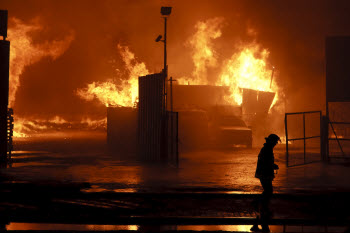
|
Who’s Affected?
Approximately 12,500 facilities have filed current risk management plans (RMPs) with the EPA and are potentially affected by the proposed rule changes. These facilities range from petroleum refineries and large chemical manufacturers to water and wastewater treatment systems; chemical and petroleum wholesalers and terminals; food manufacturers, packing plants, and other cold storage facilities with ammonia refrigeration systems; agricultural chemical distributors; midstream gas plants; and a limited number of other sources that use RMP-regulated substances.
Note. Beginning September 2016, the U.S. Occupational Safety and Health Administration (OSHA) will be enforcing a change in its interpretation that narrows which retail establishments are exempt from Process Safety Management (PSM) requirements. According to the EPA, most of the facilities affected are already subject to the EPA RMP regulation at 40 CFR Part 68, but due to their exemption from the PSM requirements, were generally subject to RMP Program 2 requirements. As a result of OSHA’s action, formerly Program 2 facilities that are no longer exempt from the PSM standard will become subject to the more stringent Program 3 requirements. To take that into account for the RIA, the EPA has reclassified all Program 2 facilities that listed themselves as wholesalers and warehouses as Program 3. As a consequence, almost 85% of all RMP facilities (10,628) are now subject to Program 3 requirements.
Major RMP Changes
In the RIA, the EPA explored low-, medium-, and high-cost alternatives for each of the major RMP changes. This article will state EPA’s projected cost for the Agency’s proposed alternative, which are averages for simple (i.e., smaller) and complex (i.e., larger) facilities.
Today we review EPA’s estimated costs for third-party audits, root cost analyses, and safer technology and alternative analyses. Tomorrow we will review the Agency’s estimated costs for coordination activities, exercises, information disclosure, and public meetings.
Third-party audits. The existing rule requires Program 2 and Program 3 processes to conduct a compliance audit at least once every 3 years. The proposed rule would require facilities to contract with an independent third party to conduct the next scheduled compliance audit following an RMP reportable accident or after an implementing agency determines that certain circumstances exist that suggest a heightened risk for an accident. The proposed alternative is the low-cost one and would apply only for Program 2 and Program 3 processes after an RMP reportable accident or at the request of the implementing agency. The medium-cost alternative would apply every 3 years for all compliance audits conducted for all Program 3 processes. The high-cost alternative would apply every 3 years for all compliance audits conducted for Program 2 and Program 3 processes.
Ka-ching! $15,000 for simple facilities; $40,000 for complex facilities. Total costs for industry: $4.9 million
Root cause analysis and incident investigation. The proposed rule would require facilities to conduct a root cause analysis as part of an incident investigation following an RMP reportable accident or an incident that could reasonably have resulted in an RMP reportable accident (i.e., “near miss”). A root cause analysis is a formal process to identify underlying reasons for failures that lead to accidental releases. These analyses usually require someone trained in the technique. The low-cost alternative would apply the provision only to RMP reportable accidents or near misses in Program 3 processes. The proposed option is the higher-cost alternative and would apply to RMP reportable accidents or near misses involving Program 2 and Program 3 processes.
Ka-ching! $1,785 per near miss, $1,335 per accident for simple facilities; $4,937 per near miss, $3,658 per accident for complex facilities. Total cost for industry: $842,629
Safer technology and alternatives analysis (STAA). Under the proposed rule, paper manufacturing, petroleum and coal products manufacturing, and chemical manufacturing facilities with Program 3 processes would be required to conduct a STAA for each process as part of their process hazard analysis, which occurs every 5 years. The STAA requirement includes two parts: the initial analysis to identify alternatives and a feasibility study to determine the costs and to assess the reasonableness of implementing technology alternatives. The proposed rule is the low-cost alternative, which would apply to all paper manufacturing, petroleum and coal products manufacturing, and chemical manufacturing facilities with Program 3 processes. The medium-cost alternative would apply the requirement to all Program 3 processes, and the high-cost alternative would apply the requirement to all Program 3 processes and would require facilities to implement feasible safer technology and alternatives.
Ka-ching! $13,109 for initial analysis for all paper manufacturing facilities and simple petroleum and coal production and chemical facilities; $15,708 for feasibility analysis for all paper manufacturing facilities and simple petroleum and coal production and chemical facilities; $40,240 for initial analysis for complex petroleum and coal production and chemical facilities; $8,514 for feasibility analysis for complex petroleum and coal production and chemical facilities. Total cost for industry: $34.8 million.
Tune in tomorrow for the Agency’s estimated costs for coordination activities, exercises, information disclosure, and public meetings.
